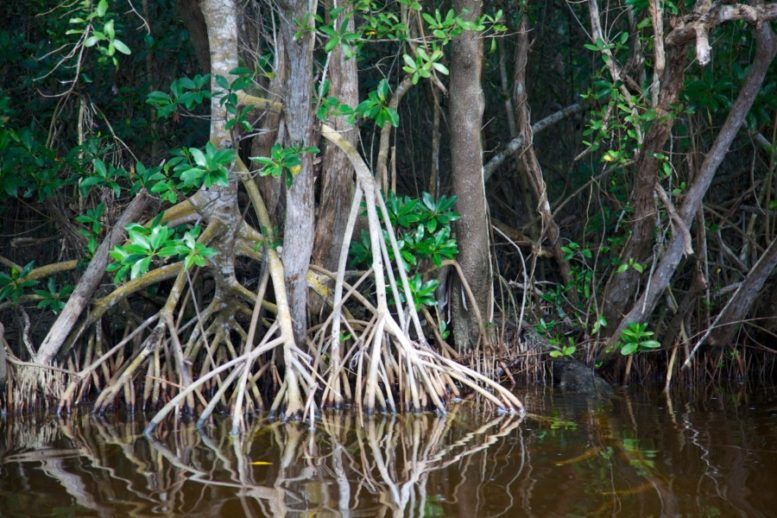
When it comes to storing carbon, scientists have put a price tag on the value of mangroves in Everglades National Park and it’s in the billions.
Based on a scientific cost estimate, the stored carbon is worth between $2 billion and $3.4 billion, the researchers found. It is a relatively small price when considering the cost to society if the carbon currently stored in these mangroves were ever released into the atmosphere, according to the scientists.
“Although the Everglades National Park is a protected national treasure, the National Parks Service doesn’t have much control over freshwater flowing into the park,” said Mahadev Bhat, co-author of the study and professor in the Department of Earth and Environment. “If there isn’t enough freshwater flowing through the Everglades, we may eventually lose some of the mangroves. And once you let stored carbon out, that same carbon can lead to increased global warming and cost society a lot more.”
In addition to removing excess carbon dioxide from the air, mangroves provide a variety of other benefits, including flood control, storm protection and maintaining water quality. The billion-dollar price tag reflects the cost to preserve the park’s mangroves and their ability to hold organic carbon intact by restoring freshwater flow to the areas that need it the most.
The mangrove forests of the Everglades National Park are the largest in the continental United States. Although protected, the Everglades is affected by sea level rise, hurricanes, changes in water flow and other environment events. Decreased funding for Everglades restoration is also problem.
“Preventing the loss of stored carbon in mangroves could become a critical component of the nation’s climate change mitigation strategies,” said Meenakshi Jerath, the lead author of the study and researcher in FIU’s Extreme Events Institute. Jerath also earned a master’s degree from the Department of Earth and Environment.
“Having an inventory of the stored organic carbon and its potential economic value is key to designing such strategies that secure funding to warrant their conservation and research work, and, more importantly, further awaken the public interest and understanding of the mangroves’ socioeconomic importance.”
The study was published in the journal of Environmental Science and Policy. The study was done in collaboration with researchers at Louisiana State University and the NASA Jet Propulsion Laboratory. It was funded by the National Science Foundation’s Water, Sustainability and Climate Program and the Florida Coastal Everglades Long Term Ecological Research Program.





